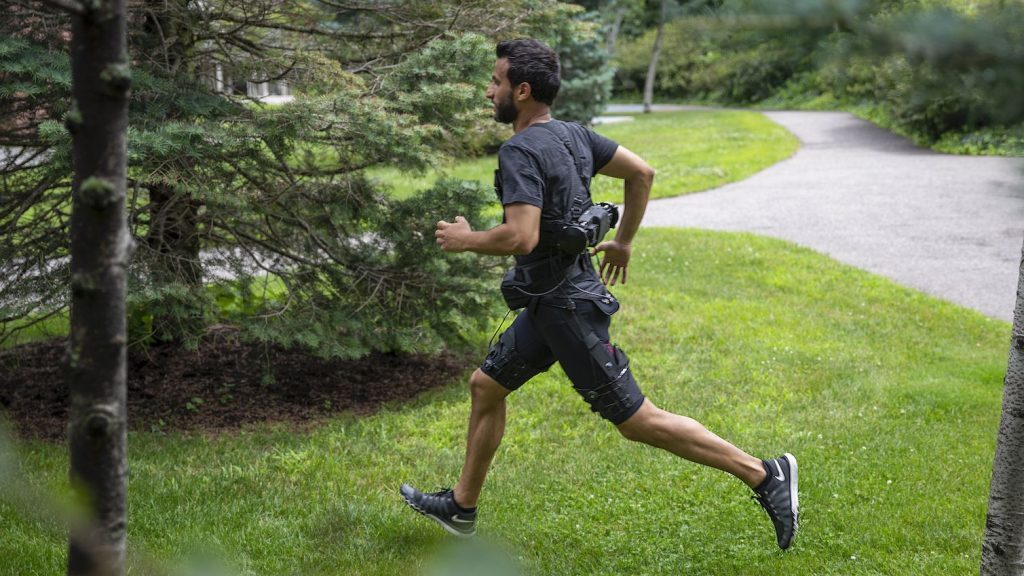It can be hard to get off the couch and onto the road, but pounding the pavement is good for you. Maybe not the knees so much, but that’s what cycling is for. Running, though, could get a boost in future thanks to wearable tech like these exo-pants. The wearable exoskeleton, the creation of Harvard University and University of Nebraska researchers, aims to assist folks looking to get their movement on.
The idea of an exoskeleton improving human capability isn’t new. They’ve been suggested for medical purposes, as well as more conventional aims, and potential versions range from hard to soft. But Harvard and Nebraska’s tech is quite an enticing take on it. Made primarily from a soft material and weighing in at just five kilograms, anyone should be able to wear them. At this point, you might be asking why. Well…
Research in motion
The exo-pants (yeah, we’re sticking with this one) offer wearers a reduced metabolic work rate (by 9.7% while walking and 4% while running). The reduction is the equivalent of immediately removing 5.5kg to about 8kg from your waist, though we’re not sure if the addition of the 5-kilo exoskeleton counts towards that total. You’d be carrying extra weight around wearing the kit, after all.
The big deal here isn’t so much that this exoskeleton helps you move more efficiently. It does, though the gains are marginal right now. It’s the fact that these pants can account for the user’s own stride and motion, and can tell when a user moves from walking to running and back. Harvard’s Conor Walsh said, “While the metabolic reductions we found are modest, our study demonstrates that it is possible to have a portable wearable robot assist more than just a single activity.”
When will we see a commercial version? That’s unknown right now but we’ll be among the first in line to try some augmented running. (Eventual) practical applications include rehabilitation from spinal and hip surgery, assistance for the elderly, and plain old augmentation. Military around the world probably wouldn’t kick these out of bed either. If you’re a transhumanist, you might even picture having this system internally installed — for a permanent movement boost.
Source: MIT Technology Review




